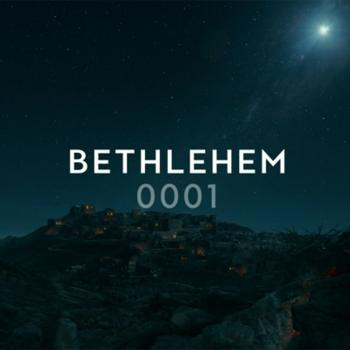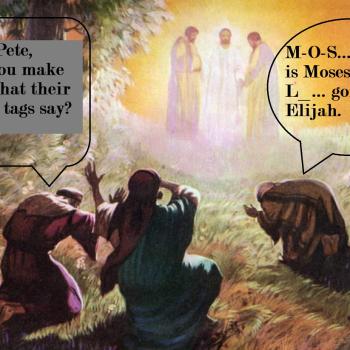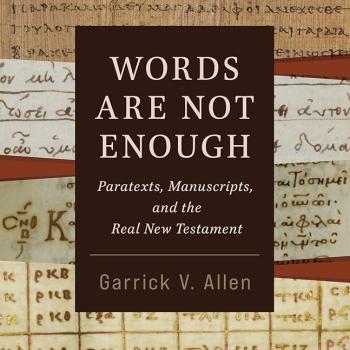Now that I have your attention, I should presumably next reassure you by saying “NO!”
But hopefully you are still asking yourself why on earth anyone would ask the question in the first place.
The reason is a discussion in my Sunday school class last week. We’ve been working through the Book of Revelation, and reached the first reference to the “morning star.” Near the end of the book, Jesus himself will be described as “the bright morning star” (Revelation 22:16).
The “morning star” refers to what we today call the planet Venus, visible and bright on many a morning and evening, and thus visible even in brightly-lit cities in our time.
There is also another reference to this celestial object in the Bible, in Isaiah 14:12, where some English translations have “morning star,” others “Lucifer,” and still others something else.
 Given the long history of identifying Lucifer in Isaiah as Satan or the Devil, the question posed in the title of this post is not as odd perhaps as it first seems (although there are certainly some odd discussions of this topic online).
Given the long history of identifying Lucifer in Isaiah as Satan or the Devil, the question posed in the title of this post is not as odd perhaps as it first seems (although there are certainly some odd discussions of this topic online).
So why the emphatic and unhesitating answer “No”? Because, despite the long tradition of using “Lucifer” as a name for Satan, the passage in Isaiah is in fact about someone and something else.
In Isaiah, the figure who is metaphorically compared with Venus is unambiguously the king of Babylon. Now, it could be argued that there might already have been a myth of an angel that tries to exalt itself and is cast down, which Isaiah was drawing upon. But the text does not actually say that. It just compares the king of Babylon to Venus.
If we ask why that comparison was made, it clearly has to do with the fact that the planets, so named because they were “wandering stars,” move around in the sky in a different manner than the stars, or from the perspective of ancient people, the other stars.
As Venus ascends and then descends across the sky, it might seem to be trying to exalt itself among the heavenly host, and then getting sent lower and lower until it reaches the Earth. This presumably inspired the comparison in Isaiah, and whether earlier or later, the mythology about a fallen angel.
 The author of Revelation clearly knew Isaiah, as well as the elaborate traditions about Satan that had grown up in Judaism since the compilation of the collection of Jewish Scriptures. So why identify Jesus as the “morning star”?
The author of Revelation clearly knew Isaiah, as well as the elaborate traditions about Satan that had grown up in Judaism since the compilation of the collection of Jewish Scriptures. So why identify Jesus as the “morning star”?
In fact, it would be going too far to call what we find in Revelation an “identification” since the first reference to the morning star in the book is in Revelation 2:28, where Jesus is depicted as saying that he will give the morning star to those who overcome.
It may have been nothing more than the brightness that was the point of the application of the imagery to Jesus, since brightness is the only thing emphasized in Rev. 22:16.
If the author had a view of Jesus as incarnating or embodying a celestial emissary, then it might also be that the astronomical movement of Venus was being recast as a descent and ascent. But perhaps the point was more likely than Jesus had ascended and was expected (as Revelation emphasizes) to descend once again.
It could also be that, just as divine imagery is transferred to Jesus in Revelation, while Satan at best offers parodies of the divine (with an unholy trinity and an apparent death and resurrection), so it was felt appropriate to transfer a potentially positive image once associated with Satan – the brightest “star” in the sky – and transfer it to Jesus.
Be that as it may, can there be any serious doubt, given the whole central thrust of Revelation, that the author’s point was not to identify Jesus and Satan?












